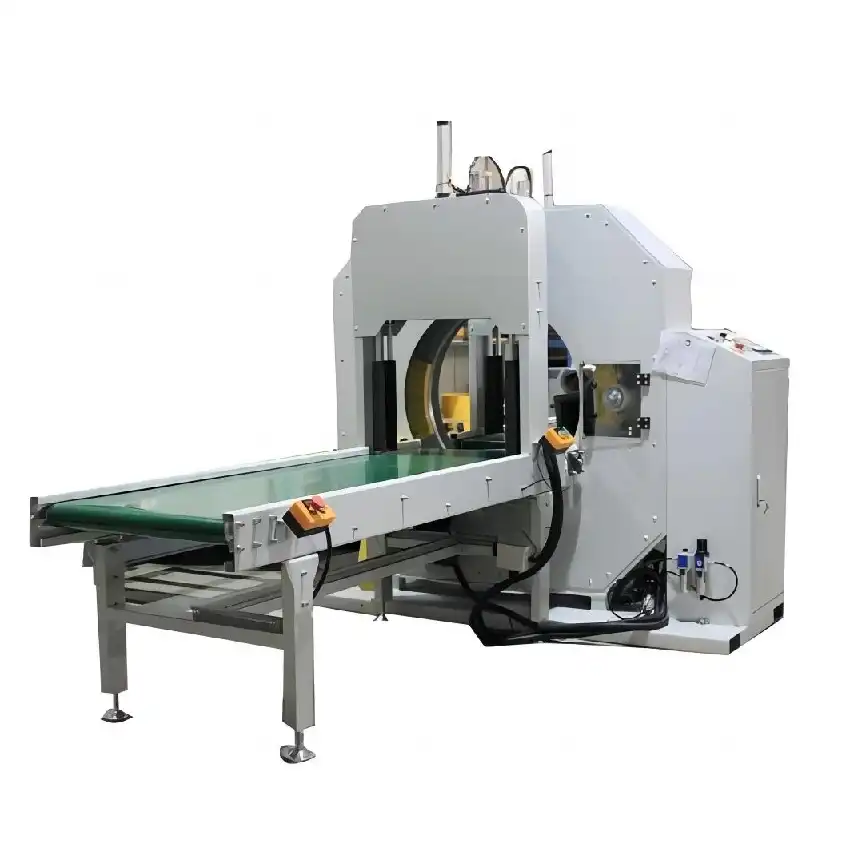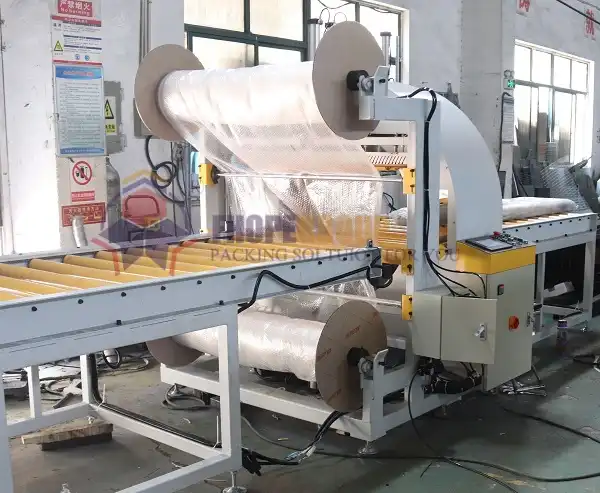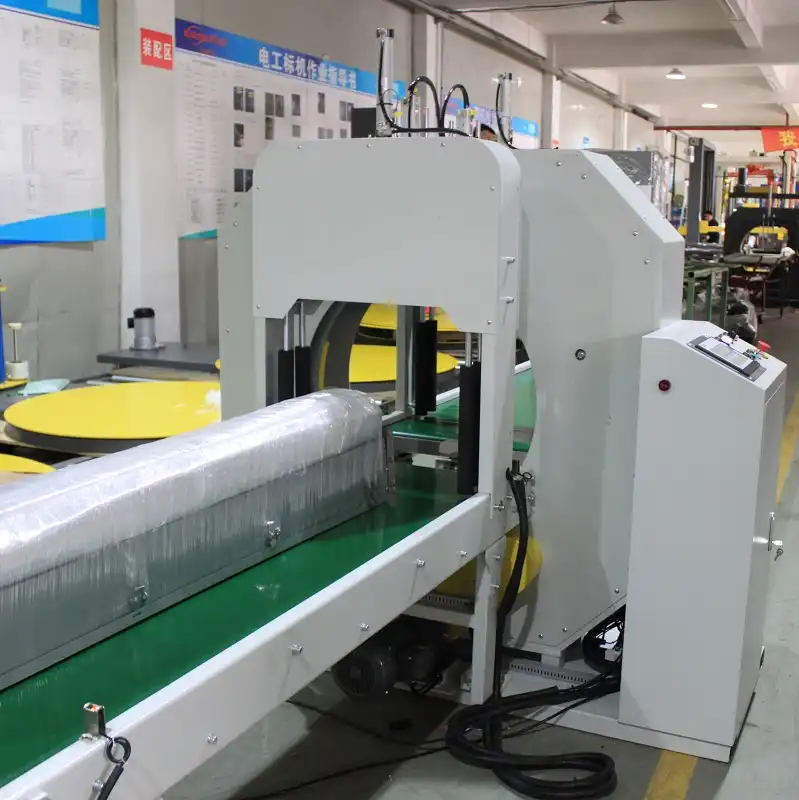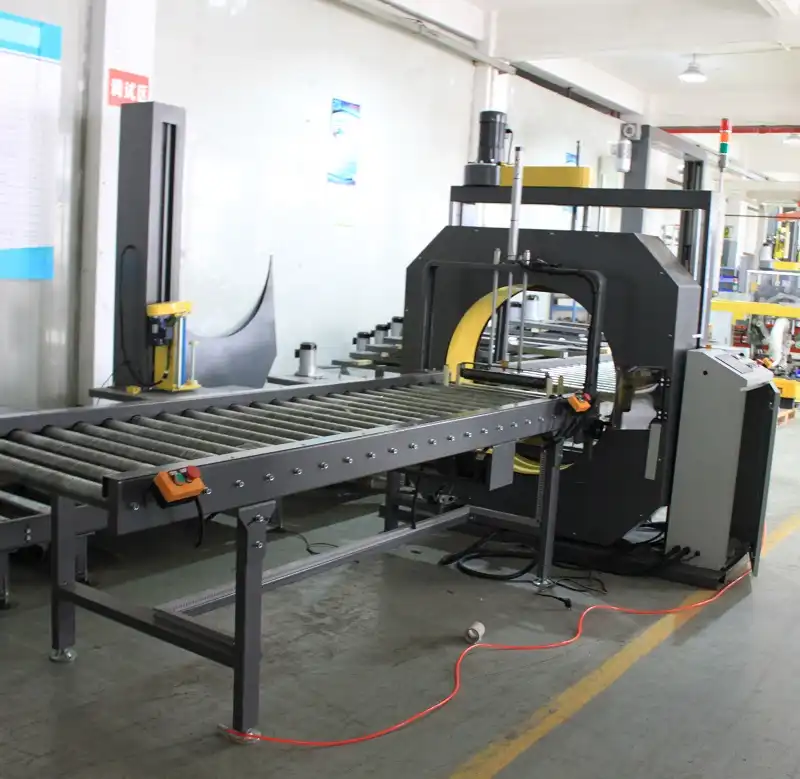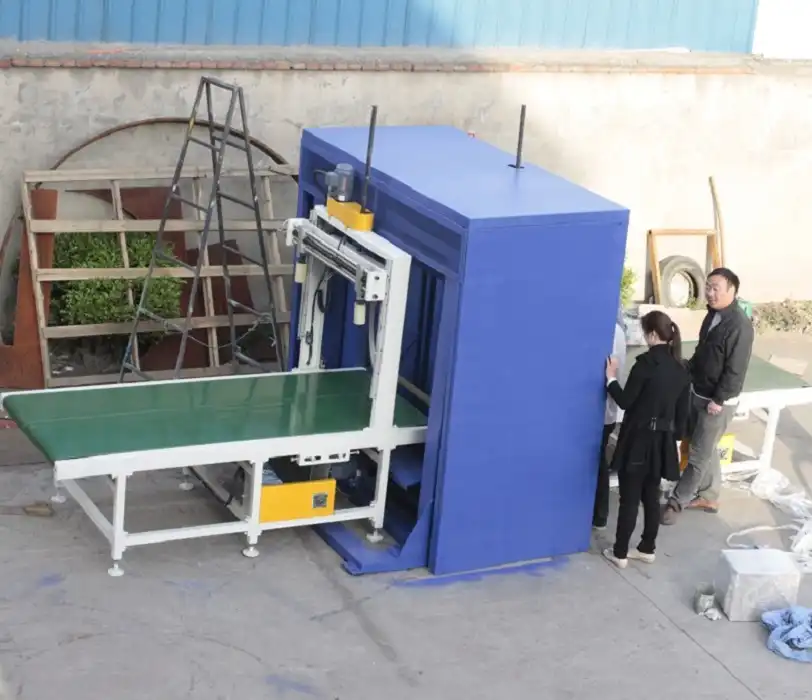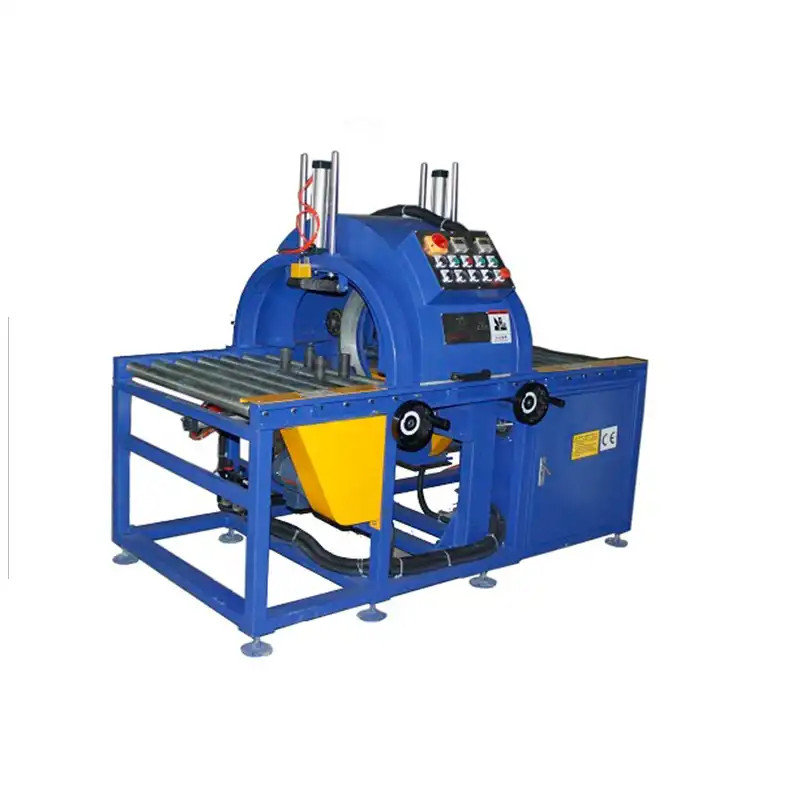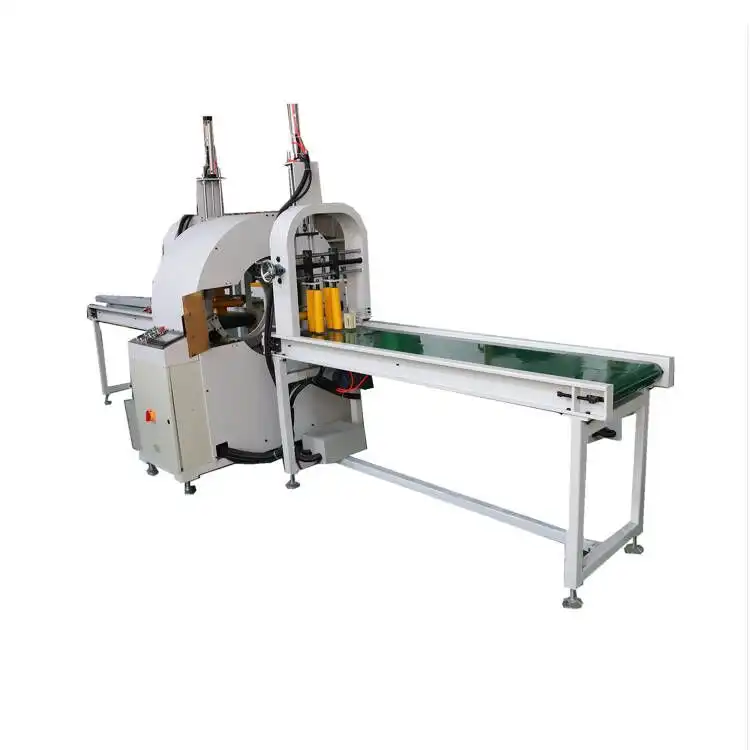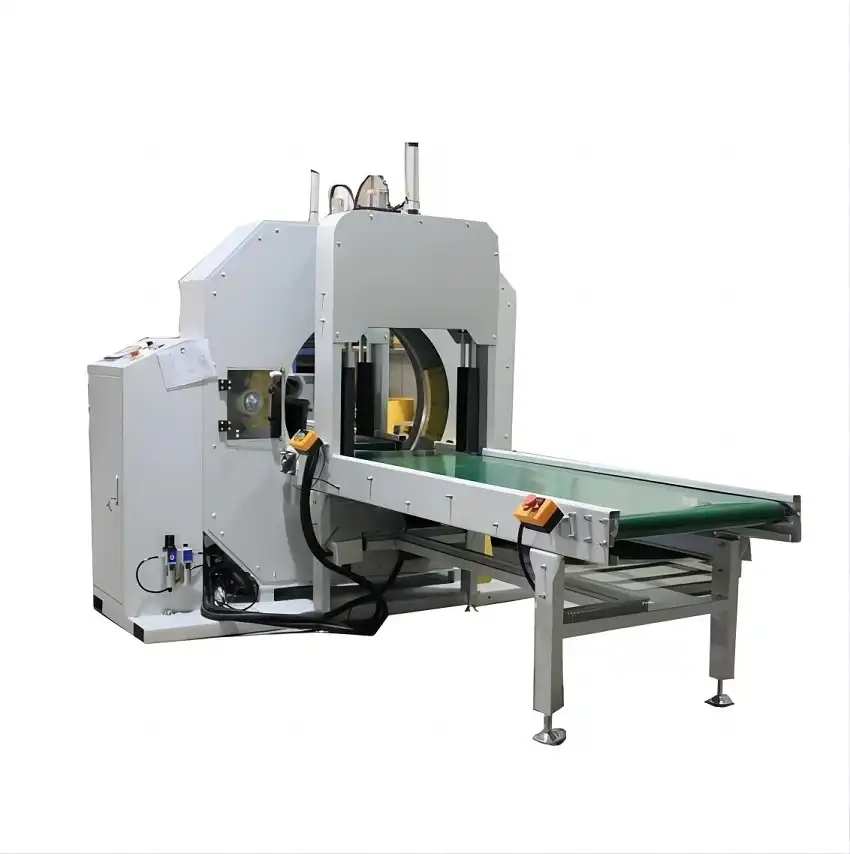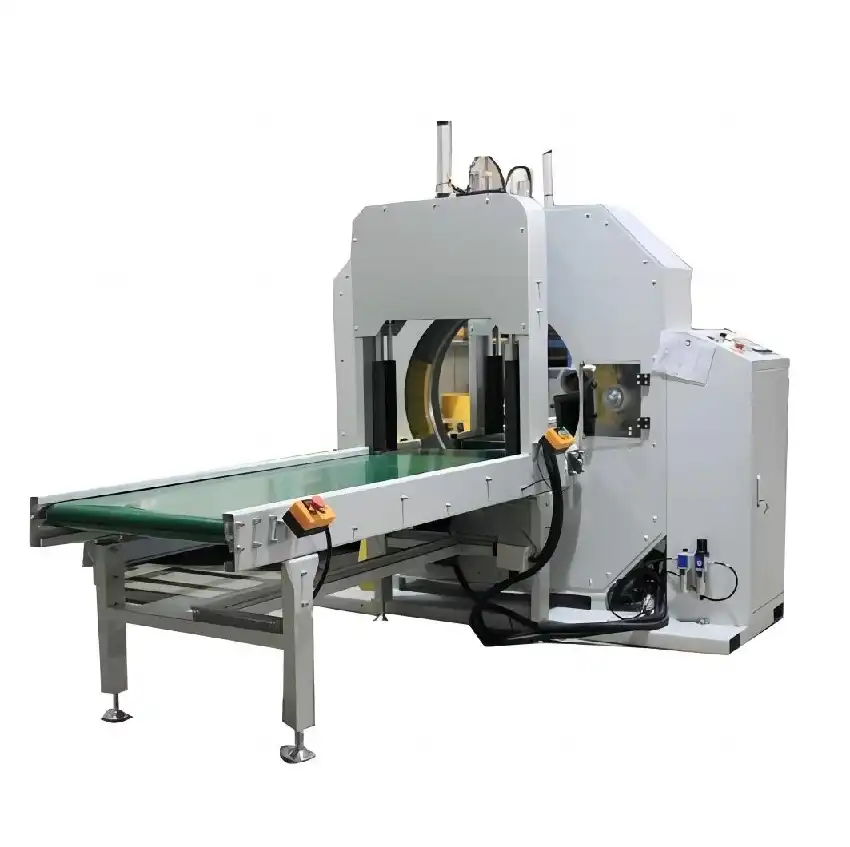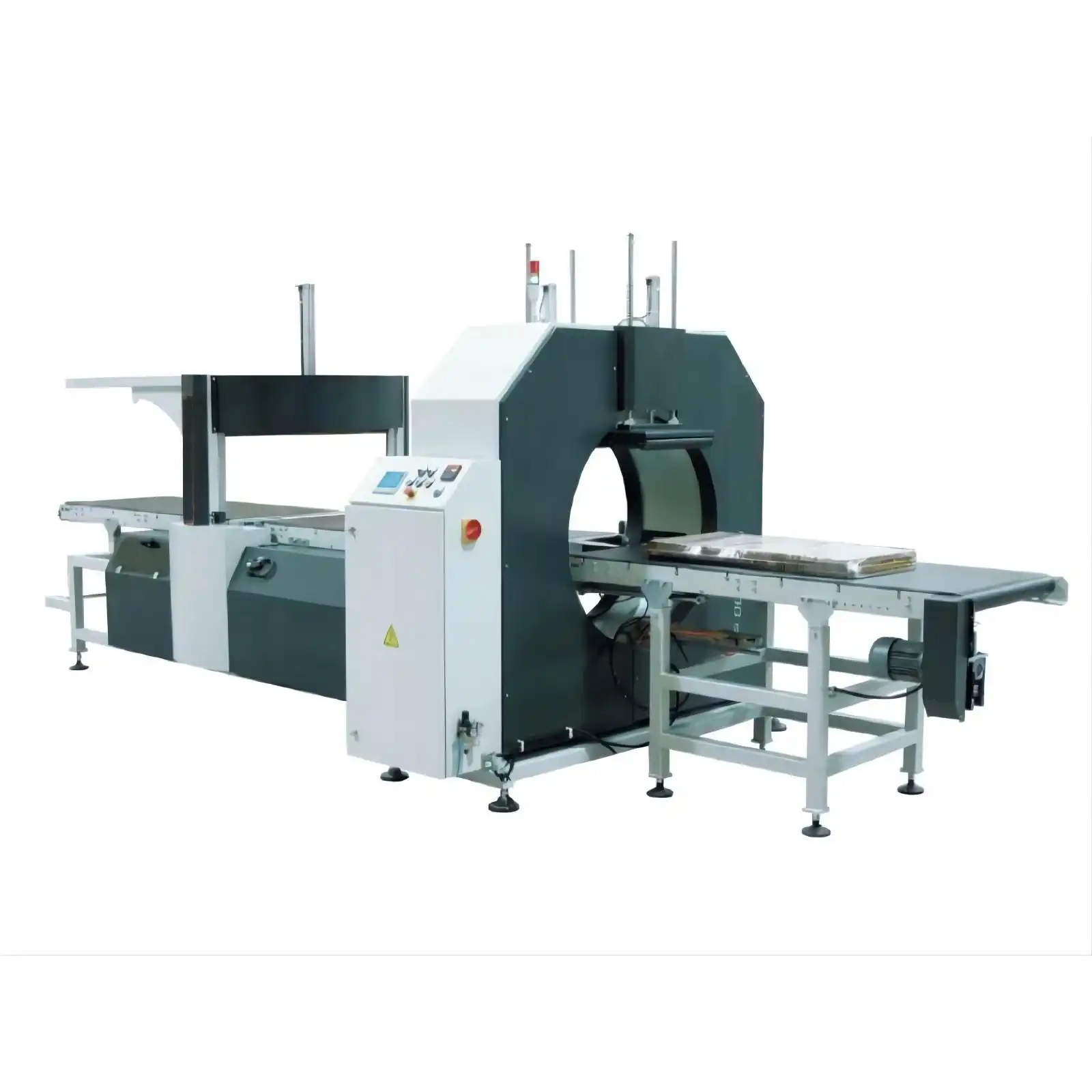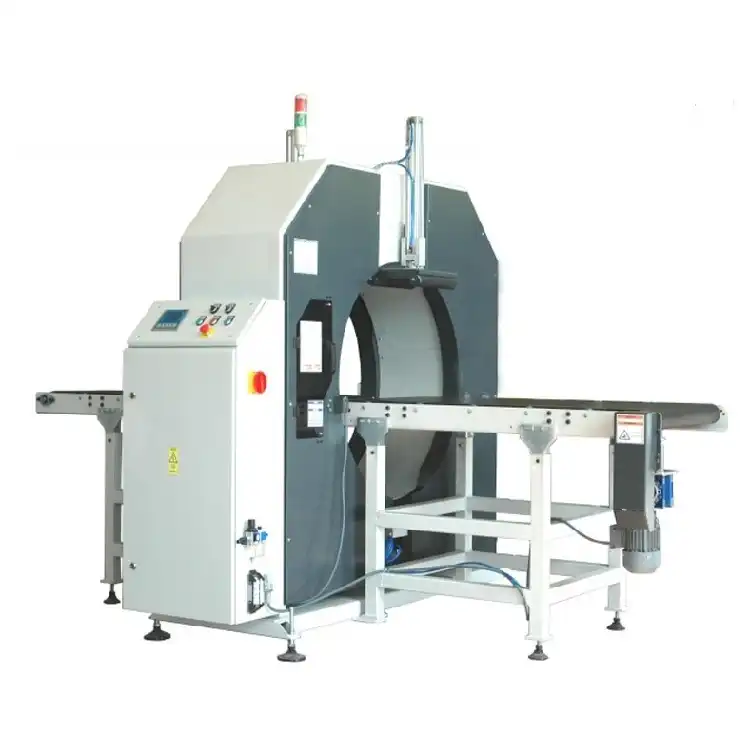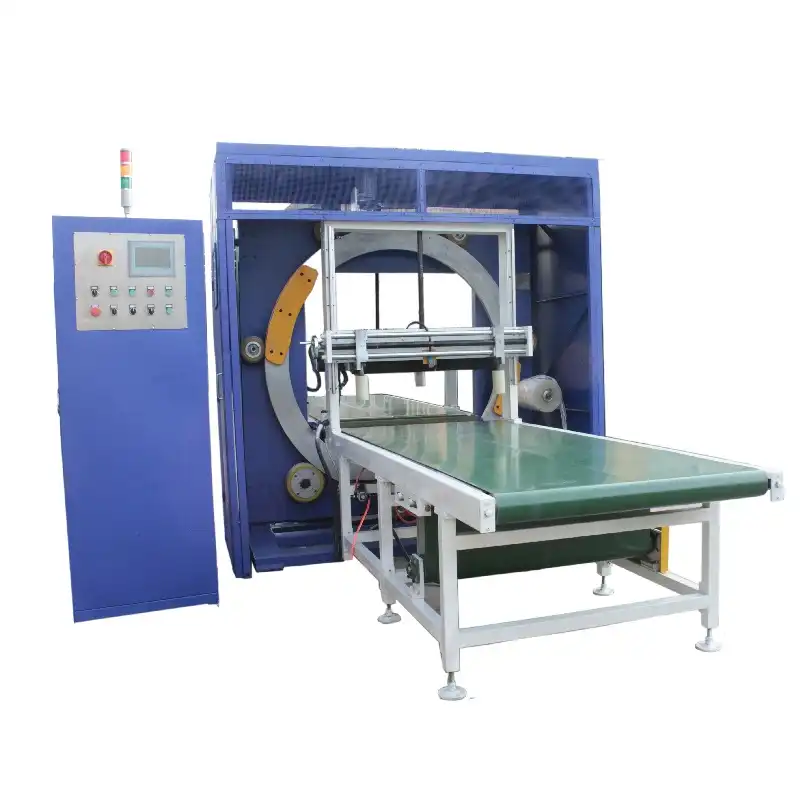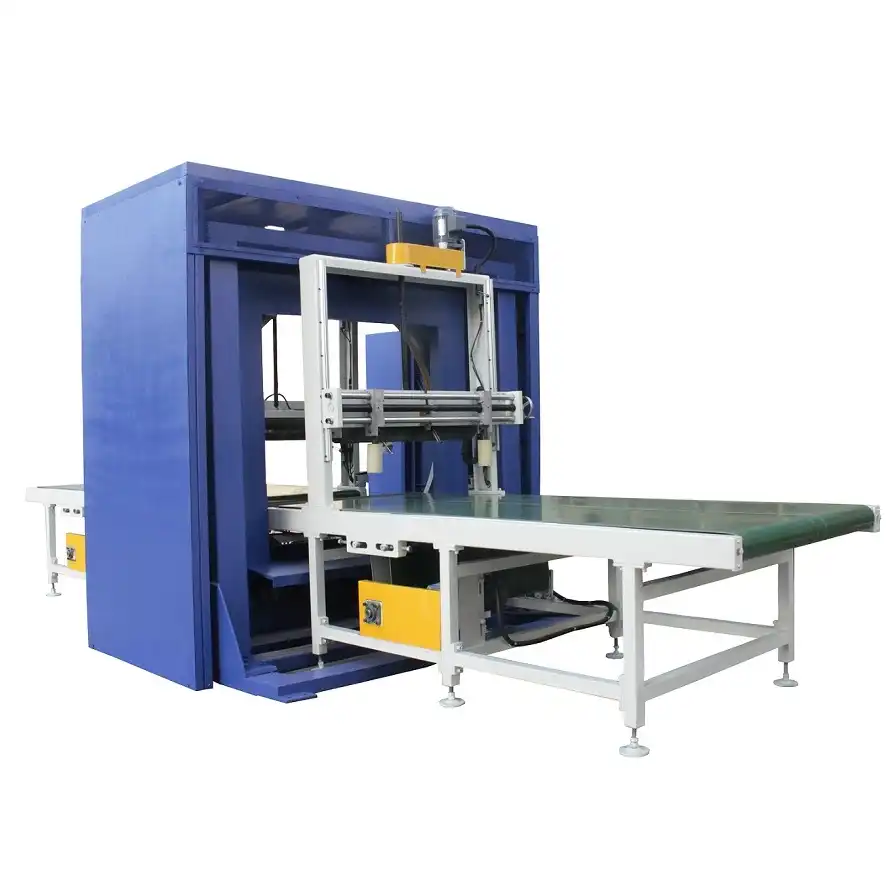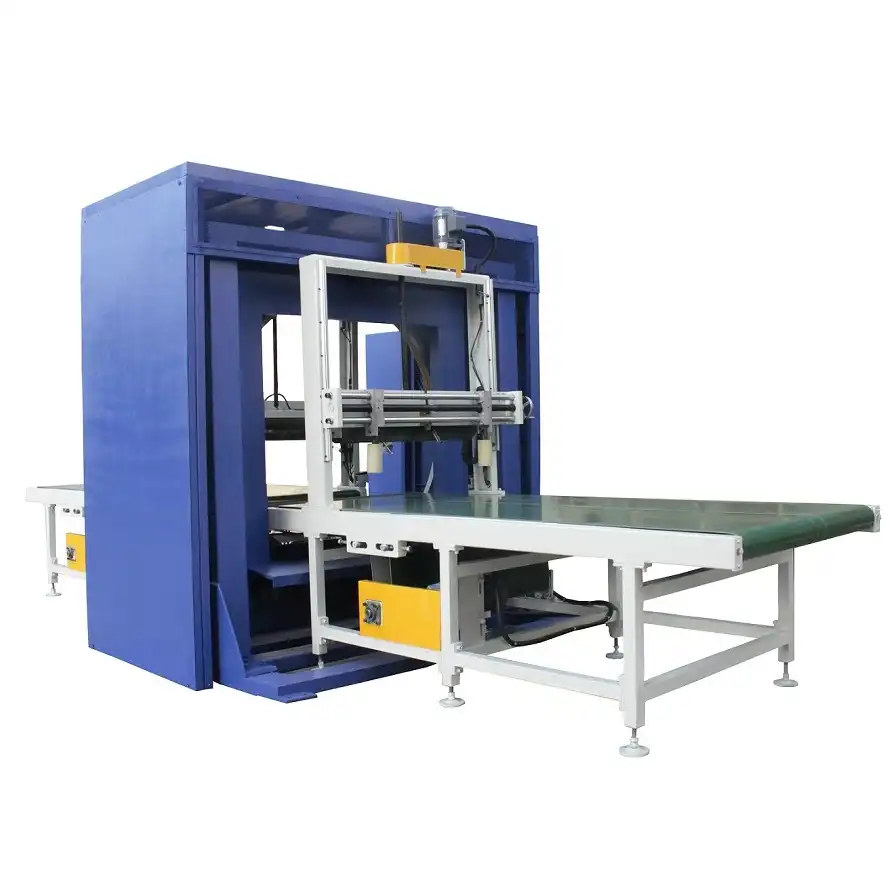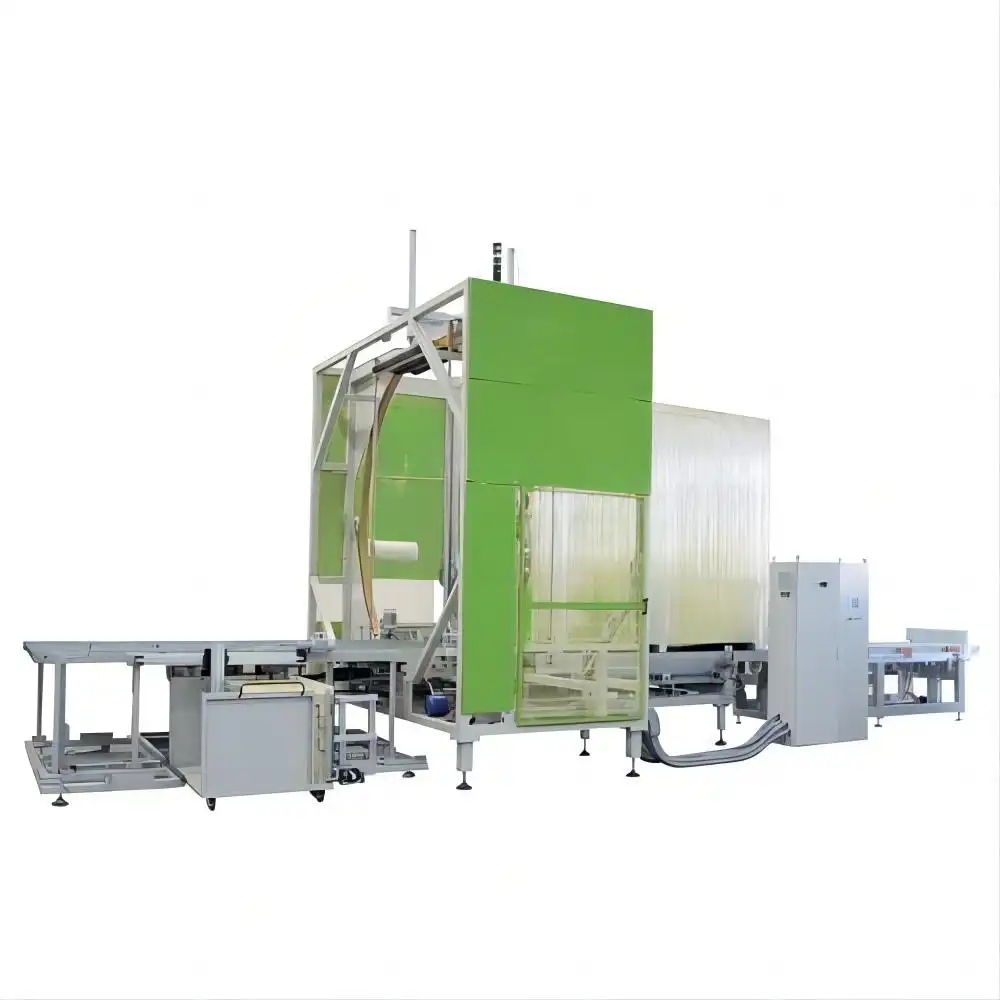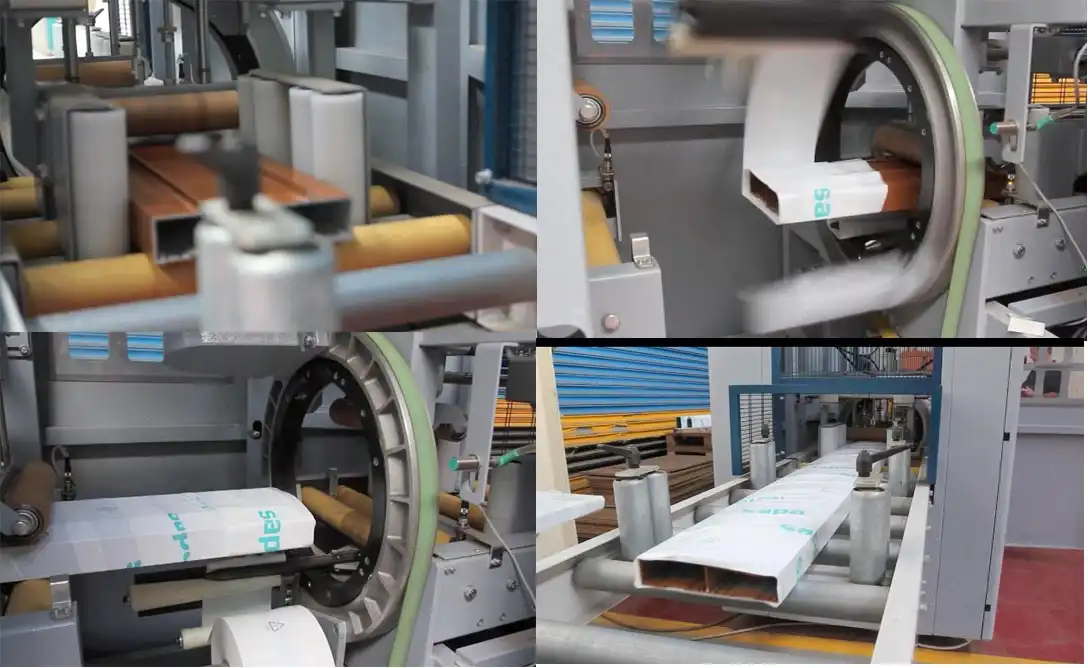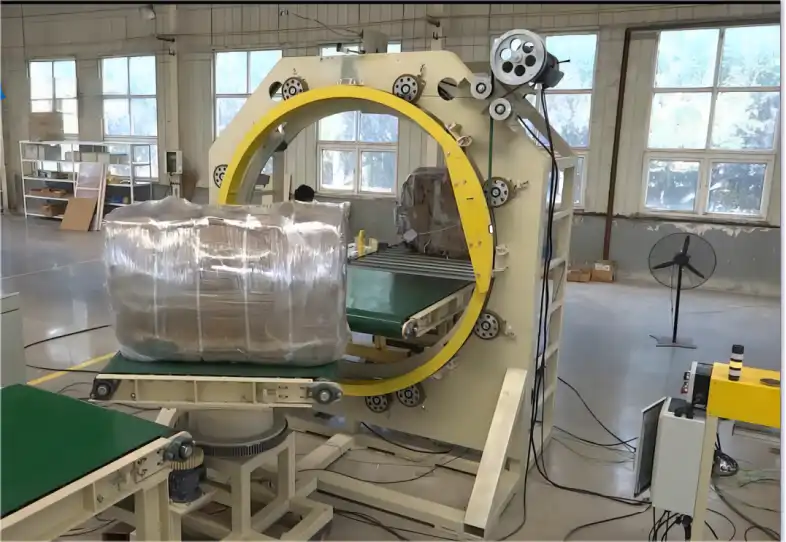Automation Levels Compared: Which Horizontal Pallet Wrapper is Right for You?
When it comes to horizontal pallet wrapping machines, choosing the right level of automation can significantly impact your business's efficiency, safety, and overall productivity. From basic semi-automatic models to fully automated systems, each machine type offers distinct advantages, and understanding which one fits your specific operational needs is crucial. In this comprehensive guide, we’ll dive into the different automation levels of horizontal pallet wrappers, breaking down the pros and cons, key features, and the factors you should consider when making a decision.

1. Understanding Horizontal Pallet Wrappers
Before we get into automation levels, it’s important to understand the basic role of a horizontal pallet wrapper. These machines are designed to wrap pallets in stretch film, creating secure, uniform packaging that protects goods during transportation and storage. They’re commonly used in industries such as manufacturing, logistics, and warehousing to improve packaging speed and reduce labor costs.
The key difference between horizontal pallet wrappers and traditional vertical wrappers is how they wrap the pallet. Horizontal machines wrap around the sides of the load, making them particularly effective for irregularly shaped or long items such as timber, pipes, or textiles.
2. The Three Automation Levels of Horizontal Pallet Wrappers
Manual Wrappers
Manual horizontal pallet wrappers require an operator to manually load and unload the pallet, position the stretch film, and start the wrapping process. These machines are typically cheaper but have significant drawbacks, such as increased labor costs, slower wrapping speeds, and inconsistent packaging quality.
Key Features:
-
Operator involvement throughout the entire process
-
Low cost
-
Minimal automation, primarily relying on manual labor
-
Suitable for small operations or irregular use
Ideal For: Small businesses with low-volume packaging needs or companies that need flexibility in the wrapping process.
Semi-Automatic Wrappers
Semi-automatic horizontal pallet wrappers are a middle ground between manual and fully automatic systems. These machines automate part of the wrapping process, such as film application or pallet rotation, while still requiring an operator to load and start the process.
Key Features:
-
Automated film application
-
Partial automation of the wrapping cycle
-
Requires manual loading/unloading
-
Improved consistency over manual wrappers
Ideal For: Mid-sized operations that want to improve packaging speed and reduce worker fatigue but don’t have the budget or the need for fully automated systems.
Fully Automatic Wrappers
As the name suggests, fully automatic horizontal pallet wrappers handle the entire packaging process from start to finish with minimal human intervention. This includes everything from loading the pallet, applying the film, and even unloading the wrapped pallet in some cases. These machines are the most efficient but also come with a higher upfront cost.
Key Features:
-
Completely automated wrapping process
-
Consistent and high-speed operation
-
Can be integrated with conveyor systems for seamless operation
-
Higher initial investment but lower long-term operational costs
Ideal For: High-volume operations where speed, consistency, and minimal human intervention are priorities. These machines are perfect for businesses that run 24/7 operations and need to streamline their packaging process.
3. Cost vs. Efficiency: Finding the Balance
When selecting the right level of automation for your pallet wrapper, one of the primary considerations is the cost vs. efficiency trade-off. Manual machines may have a lower upfront cost, but the operational inefficiencies can add up in terms of labor, speed, and consistency. On the other hand, fully automated machines require a larger initial investment but provide long-term savings through reduced labor costs, faster packaging speeds, and more consistent results.
For businesses that deal with high-volume packaging, opting for a fully automated system might be the most cost-effective solution in the long run. However, for smaller companies or those with less frequent packaging needs, a semi-automatic or manual system could offer the best balance between cost and efficiency.
4. Key Considerations When Choosing Automation Levels
When deciding which automation level is right for your horizontal pallet wrapper, several factors come into play:
Volume of Packaging
The amount of packaging your operation handles daily is one of the most important factors. High-volume operations benefit greatly from automation due to the time saved on each pallet. For lower volumes, semi-automatic or manual machines may be sufficient.
Workforce Availability
Automating processes reduces the need for manual labor. If your company faces challenges related to labor shortages or high turnover, a fully automatic machine can help alleviate these issues.
Budget Constraints
Initial budget is often the deciding factor in choosing an automation level. While fully automatic machines have higher upfront costs, they save significantly on labor and operational inefficiencies over time. Semi-automatic machines offer a compromise between cost and automation, making them a popular choice for growing businesses.
Product Type
The nature of the products you wrap also plays a role. Irregularly shaped or fragile products often require more precise and consistent wrapping, making higher levels of automation more appealing.
Future-Proofing Your Business
As your business grows, your packaging needs will likely increase. Investing in a system that can scale with your operations ensures you won’t outgrow your machine within a few years. Fully automatic systems are often the best choice for businesses that anticipate future growth.
5. Speed and Efficiency: Why Automation Matters
One of the key advantages of higher automation levels in horizontal pallet wrapping is the significant improvement in speed and efficiency. Manual wrapping is inherently slower due to the amount of human involvement required at each stage. Semi-automatic and fully automatic systems, on the other hand, can wrap pallets much faster, allowing for higher throughput.
For businesses with high packaging demands, speed becomes crucial. A fully automatic horizontal pallet wrapper can wrap more pallets in less time, leading to a substantial increase in daily output. This is particularly beneficial in industries such as logistics, manufacturing, and warehousing, where rapid packaging is essential to maintain operational flow.
Why Efficiency Equals Cost Savings
While the initial investment in a fully automatic pallet wrapper may seem steep, the long-term benefits often outweigh the costs. Automated systems reduce the need for manual labor, minimize errors, and lower the likelihood of product damage due to inconsistent wrapping. This translates to fewer returns, reduced product waste, and ultimately lower operational costs.
Companies looking to improve their bottom line should consider the long-term cost-efficiency of automated pallet wrappers, especially if labor is a significant part of their expenses.
6. Reducing Human Error: The Impact of Automation
Human error is an unavoidable part of any manual process, and packaging is no exception. Manual and semi-automatic wrappers require operators to start and monitor the wrapping process, which introduces the potential for errors such as uneven wrapping or improper tensioning of the stretch film. These mistakes can lead to unstable pallets, increased product damage, and safety hazards during transport.
By contrast, fully automatic horizontal pallet wrappers use precise programming and sensors to ensure consistent, high-quality wrapping every time. These machines apply the same amount of film tension and wrap cycle for each pallet, which reduces the risk of errors and guarantees better protection for your products.
Minimizing human error also means reducing the frequency of costly reworks and returns, improving both customer satisfaction and internal efficiency.
7. Labor Savings and Worker Safety
Another major benefit of increasing automation levels in pallet wrapping is the significant reduction in labor requirements. Manual and semi-automatic pallet wrapping systems require operators to handle heavy loads and work in repetitive motions, which can lead to worker fatigue, injuries, and higher labor turnover.
Fully automated pallet wrappers eliminate much of the physical strain on workers by automating the loading, wrapping, and unloading processes. This allows businesses to reallocate labor resources to more valuable tasks, improving overall operational efficiency.
Worker Safety Considerations
In addition to reducing labor needs, fully automated systems enhance worker safety. Manual pallet wrapping often requires employees to manually position and secure the film, which can expose them to potential injuries, such as strains or accidents from handling heavy materials. Automating this process significantly lowers the risk of workplace injuries and helps companies maintain a safer work environment.
8. Integration with Existing Systems
When investing in higher levels of automation, it's important to consider how the pallet wrapper will integrate with your existing systems. Fully automatic horizontal pallet wrappers can be easily integrated into existing conveyor and packaging lines, creating a seamless workflow that boosts overall efficiency.
Automation and Smart Technology
Many fully automated pallet wrappers now come equipped with smart technology and Internet of Things (IoT) capabilities. These features allow for real-time monitoring, remote control, and predictive maintenance, which can help prevent unexpected downtime and optimize performance. Smart technology integration is becoming increasingly popular in industries looking to future-proof their operations.
9. Return on Investment (ROI) Analysis
Understanding the return on investment (ROI) is essential when deciding between different levels of automation. Fully automated horizontal pallet wrappers have a higher initial cost, but their long-term benefits often result in a faster payback period. These machines reduce labor costs, improve packaging speed, and minimize errors, leading to more consistent output and fewer damaged goods.
By calculating the savings from reduced labor, increased throughput, and lower product damage, companies can see a clear picture of how automated systems lead to a better total cost of ownership (TCO).
When Does Automation Pay Off?
Businesses handling high volumes of packaging or operating in industries with strict quality and safety standards will likely see the fastest ROI. In contrast, smaller companies with lower packaging volumes may not benefit as quickly from full automation, making semi-automatic machines a more appropriate solution.
10. Choosing the Right Machine for Your Needs
With several automation levels available, choosing the right pallet wrapper for your business requires careful consideration of your specific needs. Here are some steps to help make the decision process easier:
Assess Your Current Workflow
Take stock of your current packaging process and identify areas where inefficiencies exist. Are you losing time due to slow manual wrapping? Are you experiencing product damage because of inconsistent packaging? Understanding your current challenges will help determine which automation level is most suitable.
Estimate Future Growth
If your business is expanding, it's important to choose a machine that can scale with your needs. Fully automated machines are often the best choice for growing businesses because they can handle larger volumes and reduce the need for additional labor as your operation grows.
Factor in Budget and Long-Term Savings
While the initial cost of a fully automatic machine may be higher, the long-term savings in labor, time, and reduced product damage should be factored into the decision. Consider how much you could save over time with a machine that requires less manual intervention and produces fewer errors.
Consult with Experts
Before making a final decision, it’s wise to consult with equipment experts who can help guide you in selecting the right machine. They can evaluate your needs, budget, and future goals to recommend a solution that fits your operation perfectly.
Conclusion: Finding the Right Automation Level for Your Business
Choosing the right horizontal pallet wrapper comes down to understanding your business’s unique needs, budget, and long-term goals. Manual wrappers offer flexibility at a lower cost but come with significant trade-offs in terms of speed and consistency. Semi-automatic systems provide a good balance for mid-sized operations, offering some automation without the full investment required for a fully automated system. Finally, fully automatic machines deliver the highest levels of efficiency, safety, and consistency, making them the ideal choice for high-volume, fast-paced operations.
Ultimately, the right decision depends on how much you're willing to invest upfront and your expectations for long-term savings and operational efficiency. By carefully evaluating your packaging needs, workflow, and future growth, you can select the right level of automation that ensures your business remains competitive and efficient in the long run.
